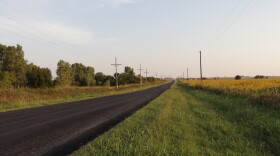-
Rural leaders who have worked years to improve broadband access said they were disappointed by the sharp decrease in federal dollars.
-
The Trump Administration asked states to find the lowest-cost option in the latest program to build broadband infrastructure in rural areas. That opens the door for more types of technology, which some worry could be less reliable in the long-term.
-
A federal program to expand high-speed internet access has been canceled.
-
The Oklahoma Broadband Office opened a large round of federal grants for high-speed internet projects in the state last week. Officials say it is the largest broadband expansion program in the state's history.
-
The federal investment follows the $1 billion approved by Texas taxpayers to help connect the state.
-
An Oklahoma tribal nation and two telephone companies are receiving $67.4 million to expand broadband access in rural Oklahoma.
-
Reliable broadband service is essential in today's world, and we discuss Oklahoma's plan for improving access with the new executive director of the Oklahoma Broadband Office.
-
Oklahoma has nearly $800 million from the National Telecommunications and Information Administration to expand broadband access across the state. It’s part of a $42.5 billion federal program called Broadband Equity, Access, and Deployment (BEAD) — a component of the Biden-Harris administration’s “Internet for All” initiative.
-
Counties in Southeast Oklahoma and the panhandle will receive funding from the U.S. Department of Agriculture to bring high-speed Internet to rural communities.
-
Lawmakers also approved a $15 million grant program to improve local mental health options for children and families.

Play Live Radio
Next Up:
0:00
0:00
Available On Air Stations









